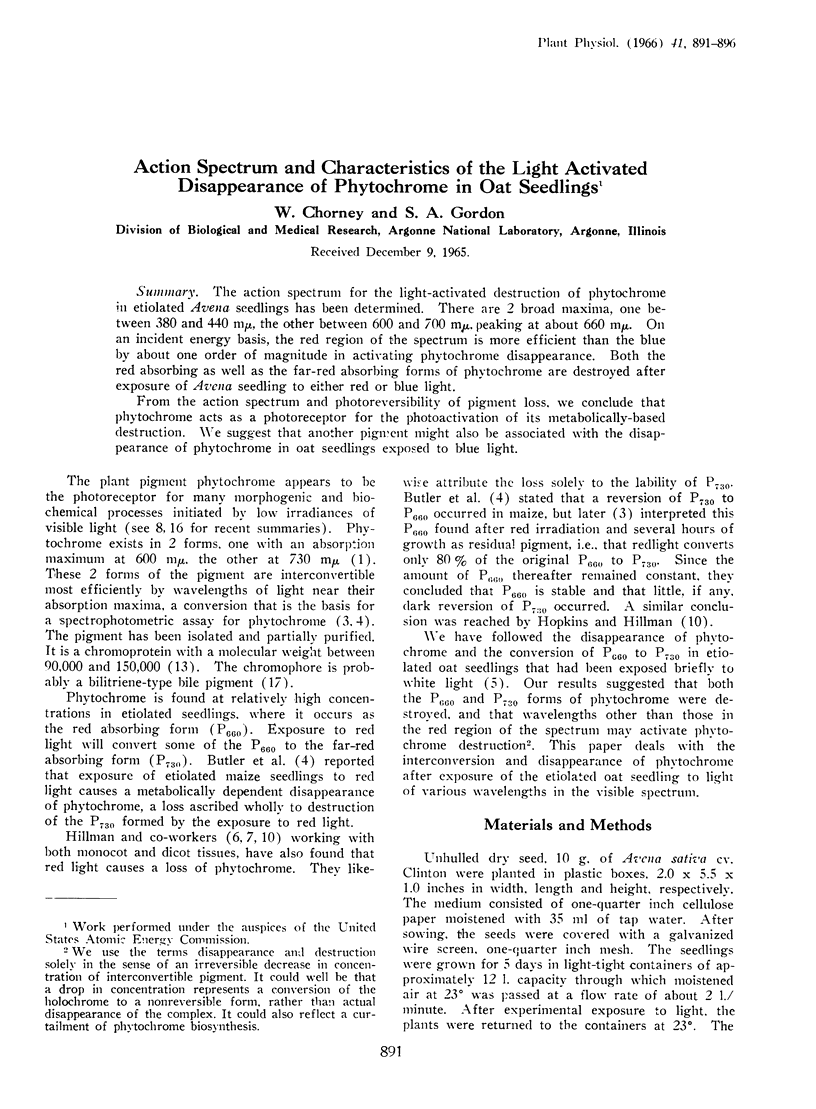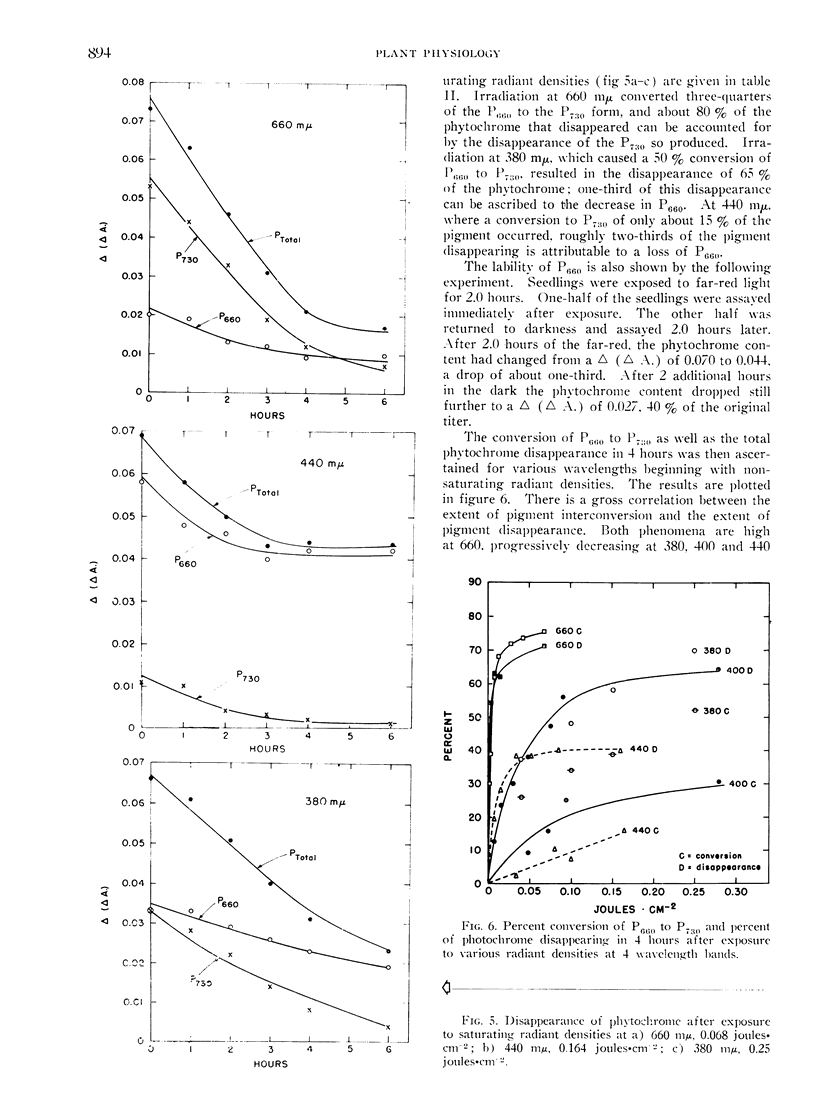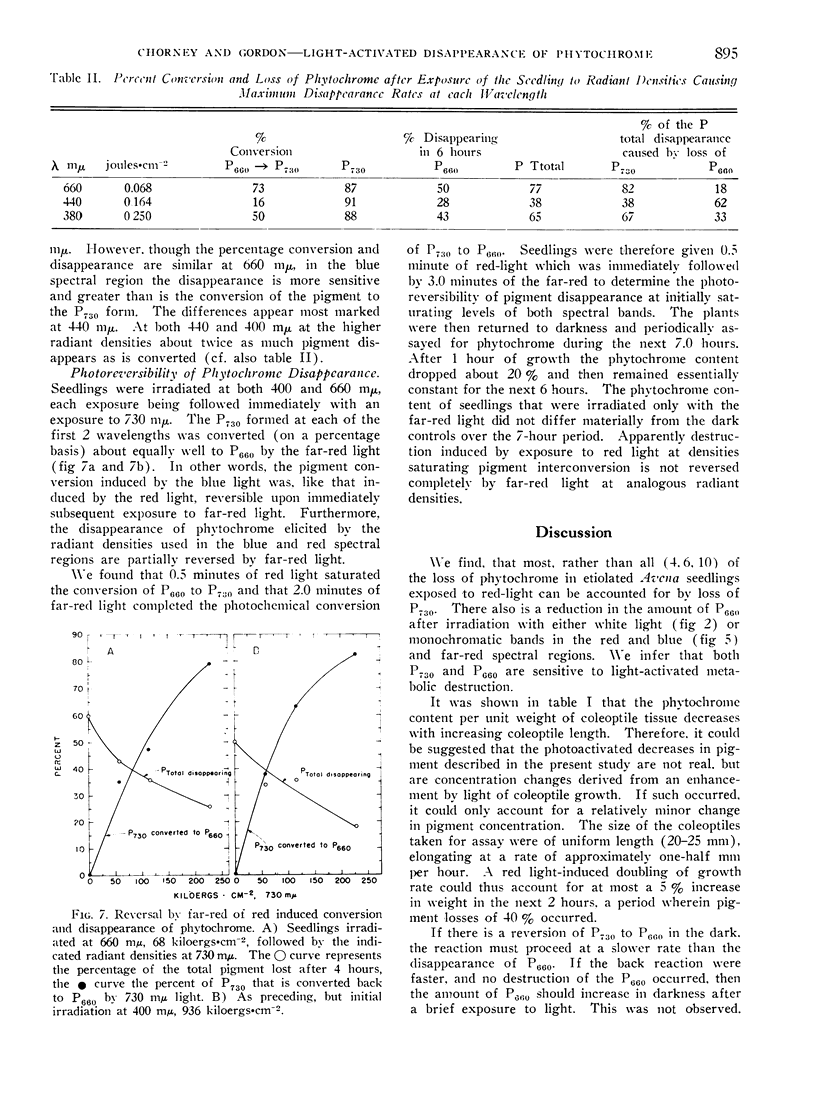Abstract
The action spectrum for the light-activated destruction of phytochrome in etiolated Avena seedlings has been determined. There are 2 broad maxima, one between 380 and 440 mμ, the other between 600 and 700 mμ. peaking at about 660 mμ. On an incident energy basis, the red region of the spectrum is more efficient than the blue by about one order of magnitude in activating phytochrome disappearance. Both the red absorbing as well as the far-red absorbing forms of phytochrome are destroyed after exposure of Avena seedling to either red or blue light.
From the action spectrum and photoreversibility of pigment loss, we conclude that phytochrome acts as a photoreceptor for the photoactivation of its metabolically-based destruction. We suggest that another pigment might also be associated with the disappearance of phytochrome in oat seedlings exposed to blue light.
Full text
PDF







